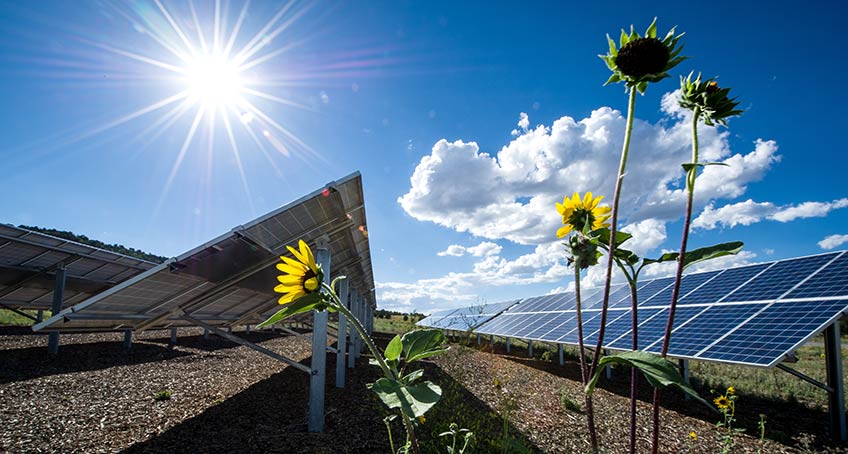Four Major Factors That Define DER Systems
Since the past few years, distributed energy resources or DER is becoming a buzzword in the energy space. A market-driven clean energy vision is driving the marketplace to improve energy usage and reduce environmental impact. DERs are transforming how the electric grid performs. It comprises a wide range of technologies, vendors, and protocols to initiate the transition of the electric grids.
DERs are small, modular, energy generation and storage technologies providing energy where you need it. It comprises of several technologies like diesel engines, microturbines, fuel cells, solar photovoltaic (SV), small wind turbines, and more. The falling cost and increasing spread of DERs by leveraging a combination of solutions and technology to reduce the total cost of energy. It involves deploying on-site energy generation, energy storage, and decentralized grid to provide cleaner, cost-effective, and more resilient energy. Hence, DERs emphasized holistic, data-driven distribution planning for energy distribution. It is increasingly playing an important role to improve grid performance and develop comprehensive, sustainable solutions to modernize the grid.

The distributed energy resources systems include generation devices, monitoring systems, control schemes, and energy storage systems (ESS). All of these systems work together to efficiently power producers and consumers to meet real-time demands. DER system has augmented transmission-distribution interface changes. Here are few important factors that concern the DER systems and their role in grid modernization.
DERS And Storage
Microgrids (or MG) are an important part of the DER family. The coordinated operation and control of DER along with controllable loads and storage devices form an essential part of the microgrid. Microgrids are operated in interconnection to the main distribution grid, or in an islanded mode. These are smaller-scale versions of the power grid, and includes distributed generation (typically wind or solar), advanced control systems, energy storage systems, and islanding capabilities. The rise of microgrids is creating a vision of highly reliable, efficient, renewable, and ‘islandable’ grid networks. It helps in the effective management of decentralized power production volatility without investing much into transmission upgrades and extensions to maintain energy consumption needs.
DER Challenges for Utilities
Utilities are interposed with various challenges with the growth of the DER market. Renewable DERs face various engineering challenges to system protection, operation, power quality, and more. Without upgrading the grid, achieving DER integration is difficult. It can be resolved by properly upgrading the electric power system. Besides this, there is a rate-return squeeze that affects the DER adoption rates. Customers who generate their power with DER are less likely to purchase electricity from their utility. It can increase the rate of electricity overall. With the changing customer behavior, there is a stringent requirement for system modeling and operation practices to optimize the use of DERs.
DER Benefits
DER helps companies to stay ahead of a power outage as sudden transmission loss can significantly hamper business operations. DERs are being equipped with state-of-the-art capabilities for active power control and reliability for mitigating outage issues. These small-scale power generation or storage technologies are deployed on-site for better accessibility to energy. It is a faster and less expensive option than constructing large and centralized power plants and high-voltage transmission lines. Besides this, DER is improving energy storage and expediting a shift towards adopting renewable energy. It is enabling a reduction in emissions, and connection of clean energy resources to the grid. It leverages efficient energy systems across multiple pathways, such as electrical, thermal, fuels, water, and physical scales. Hence, DERs offer customers the potential for lower cost, high power quality, and increased energy independence.
DER Opportunities for Utilities
DERs are creating opportunities for utilities to throw up exciting opportunities for supplementing the change in energy vision, improve current energy services, and ensure reliable power transmission. Utilities are increasingly getting involved in providing the latest programs and technologies. These include energy efficiency, rooftop solar technologies, enabling electric vehicles, and more for leveraging a positive change in the community. Utilities need to proactively manage and organize DER to make the grid more valuable. They can turn DERs into an opportunity by performing load and DER adoption forecasts, measuring T&D grid impacts and bulk power impacts, regulating finance and rates, and using this data to facilitate strategy and operations for DER adoption.
As utilities start seeing and acting on the demand for DERs, it will enable them to open up new avenues for adoption and efficiently harness those resources. It will enable them to reorient the future of DER. Data, analytics, and digital technologies play an important role in the entire DER value chain. Utilities need to deploy it for initiating better integration of multiple DER resources, sophisticated pricing, and grid interaction.
To Conclude:
DER systems are undoubtedly valuable in the grid modernization process. It is initiating a more dynamic and flexible grid that is more dependent on clean energy resources and provides enhanced energy reliability. DERs are supporting a more flexible and resilient grid with energy storage-specific benefits, hence playing a key role in shaping the electric power system. Hence, the integration of DERs is a promising endeavor for utilities.
For more visit – Electric vehicles companies




